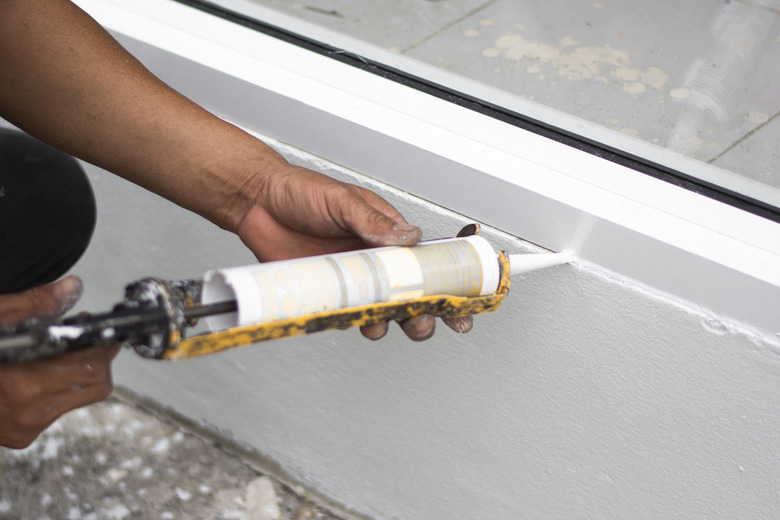How To Speed Up Caulk Drying
We may receive a commission on purchases made from links.
Caulking is an important step in sealing and protecting areas exposed to moisture, but when you're working on a larger project, you might want to speed up caulk drying to move on to the next step. You don't want to rush the caulk too much, or it might not cure properly. However, optimizing the conditions and choosing the right type of caulk for the job can speed up caulk drying somewhat.
Drying vs. Curing Time
Drying vs. Curing Time
Caulk goes through two different phases: drying and curing. Most caulk is dry to the touch relatively quickly, but it still needs to cure to ensure it's fully set and able to provide waterproof protection. Always check the packaging to determine the drying and curing times for the specific caulk formulation you use.
The room conditions can affect drying and cure time. Silicone and acrylic latex caulk can dry to the touch in as little as 30 minutes, but it's a good idea to give it three to 12 hours to dry. However, all caulk types need another one to 10 days to fully cure depending on the specific type of caulk you use, with polyurethane caulk taking the longest to cure. Even the fastest-drying caulk should generally be given at least 24 hours before you get it wet.
Choose Caulk Type Wisely
Choose Caulk Type Wisely
If you're mainly concerned about the speed of caulk drying, stick with silicone or acrylic latex caulk. Silicone caulk is ideal for smooth, nonporous surfaces, such as metal, ceramic and glass, making it ideal when caulking bathrooms. Acrylic latex tends to shrink and crack, reducing its waterproof quality. It's best for sealing joints in wood where there won't be a lot of moisture or water exposure.
To speed up caulk drying, choose a fast-drying caulk formula no matter what type of caulk you use. Read the instructions on these products. They often require a specific temperature and humidity level for the faster drying times. Conditions outside of those recommendations can slow the drying and curing processes, but they still might dry faster than regular formulations.
Another consideration is whether or not you plan to paint the caulk. Some caulk formulas let you paint 30 minutes after applying it. The caulk continues to cure even after being painted. This option can help speed up your project overall if you need to paint the caulk. Other caulk types have to cure for several days before you can paint them.
Check the Expiration Date
Check the Expiration Date
If you have old caulk that you plan to use, check the expiration date before loading it into the caulk gun. If the caulk has been sitting around for a while, it can start to deteriorate, which slows down the drying and curing process. If it's too old, the caulk might not fully cure no matter how long you wait. Your best bet is to buy fresh caulk for each project for effective drying and curing.
Speed Up Caulk Drying
Speed Up Caulk Drying
Cold temperatures can slow the drying process, but you also don't want it to be too hot when you caulk. In general, you should caulk in areas with a temperature range of 40 to 80 degrees Fahrenheit. Check your caulk tube for instructions and recommendations on a more specific temperature range.
Colder air tends to be dry, especially in the winter, which slows down the curing time of silicone caulk. The dry, cold air can also make it difficult for polyurethane caulk to cure properly. Extremely cold temperatures can cause latex caulk to freeze. Warmer temperatures and at least some humidity in the air provide optimal drying and curing conditions for caulk.
Control the Moisture
Control the Moisture
Humidity in the air can either slow down or speed up caulk drying depending on the type of caulk you use. If your project calls for silicone caulk, having moisture in the air helps it dry and cure. If the air is especially dry, you can use a humidifier to add moisture to the air. Avoid using heat to speed up the silicone caulk drying process, as it can soften or melt the caulk.
If you're using acrylic latex caulk, setting up a fan in the area can help speed up drying and curing. That's because water evaporating from this type of caulk is what makes it dry and cure. If the room is very humid, it can take acrylic latex caulk longer to dry.
